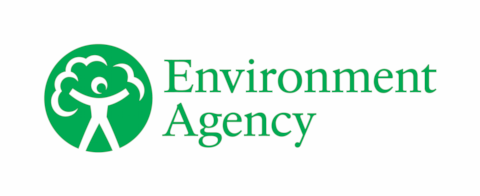Hertfordshire and North London water situation: August 2025 summary
Updated 12 September 2025
Applies to England
1. Summary
August was generally dry across the Hertfordshire and North London area, receiving only 41% of the long term average (LTA) rainfall. Almost all areal units recorded rainfall in the notably low band and despite a fairly wet end to the month, soil moisture deficits increased further, with very little effective rainfall. River baseflows decreased during August but remained stable in chalk catchments, in contrast to the clay and urban rivers, where some indicator sites recorded their lowest August flows on record. Groundwater levels across the area also declined during August but remained in the normal band in the Mid-Chilterns Chalk, while most sites in the Upper Lee Chalk stayed in the above normal band.
2. Rainfall
August was a generally dry month across the Hertfordshire and North London area (the Area), receiving 25mm of rainfall, 41% of the LTA. Four of five areal rainfall units finished the month in the notably low band, with the exception being Chilterns East Colne, which was in the below normal band. Additionally, over the past 6 months, rainfall across the Area was in the exceptionally low band. Despite the generally dry weather, a fair amount of rain fell towards the end of the month, most notably on 28 August. On this day, the highest rainfall totals were recorded in the east of the Area, with 21.0mm recorded at Havering Bower (Roding unit) and 17.4mm recorded at Dane End (Lee Chalk unit). In total, there were 15 dry days during August (under 0.2mm of rain recorded).
3. Soil moisture deficit and recharge
Soil moisture deficits continued to increase throughout the area during August, meaning all areal rainfall units finished the month well above their LTAs. As was the case with July, very little effective rainfall was received in the Area during August. A small amount of effective rainfall was recorded in the chalk catchments, while none was received in clay and urban catchments.
4. River flows
During August, river baseflows continued their seasonal decline. In chalk catchments, all indicator sites recorded monthly flows in the normal band, apart from Colney Street (River Ver) and Panshanger (River Mimram), which recorded in the above normal and notably high bands respectively. Compared to July, monthly flows in chalk areas contrasted a lot more with the clay and urban rivers in August, were all indicator sites recorded in the exceptionally low band. Cranford Park (River Crane) and Monks Park (River Brent) recorded their lowest August flows on record (records begin in 1978 and 1979 respectively), while Upminster (River Ingrebourne) was at its second lowest August flow, exceeded only by 1976 (records begin in 1970). The only notable flow peak across the area occurred on 29 August, in response to high rainfall the previous day, meaning no flood alerts or warnings were issued during the month.
5. Groundwater levels
Despite continuing to decline, groundwater levels across the Area remained stable during August, with indicator sites ranging from the normal to notably high bands. In the Mid-Chilterns Chalk, all indicator sites recorded end of month levels in the normal band. Meanwhile, the Upper Lee Chalk still had most sites in the above normal band, apart from Therfield Rectory, which recorded its end of month level in the notably high band.
6. Reservoir stocks
The Lee Valley reservoir group began August at 95% of live capacity and finished the month at 91%, meaning it remained above its average level. The lower Thames group started August at 79% of live capacity and finished at 67%, meaning it fell further below its average level for the time of year. This drop in levels is due to a fall in the flow of the River Thames coming into London.
7. Environmental impact
In the Colne catchment, the chalk river sources moved slightly downstream from their locations in July overall, the:
- River Ver started flowing below Markyate
- River Gade started flowing upstream of Great Gaddesden
- River Bulbourne was flowing at Northchurch before drying and gaining a steadier flow downstream of Stag’s Lane, Berkhamstead
- source of the River Chess was still just upstream of Chesham
- River Misbourne started flowing at upstream of Little Missenden
The chalk river sources in the Upper Lee also mostly moved downstream since July, the:
- River Mimram started flowing above Whitwell
- source of the River Beane was just above Walkern
- River Rib started flowing in Buntingford
- source of the River Ash (Herts) was just upstream of Much Hadham
- River Stort flowed briefly between Clavering and Manuden but ran dry before gaining a steadier flow at Stansted Springs
To protect the environment, during August a number of abstraction licence flow constraints were in force. This ranged between 9 and 12 per week, out of a maximum of 31.
Author: Groundwater and Hydrology, groundwaterhydrology@environment-agency.gov.uk
Contact details: 03708 506 506
All data are provisional and may be subject to revision. The views expressed in this document are not necessarily those of the Environment Agency. Its officers, servants or agents accept no liability for any loss or damage arising from the interpretation or use of the information, or reliance upon views contained within.

